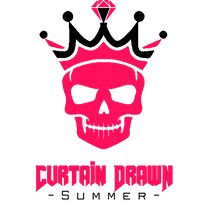Introduction:
Fashion is an ever-evolving phenomenon, with trends coming and going. However, some styles from the past have proven to be timeless, continuing to influence modern fashion. The 1980s was an era of bold and daring fashion choices, with oversized clothing, neon colours, and metallics dominating the runway and streetwear scenes. While some may reminisce about the 80s with nostalgia or amusement, some aspects of that decade's fashion have endured and been reimagined in modern subcultures such as goth, emo, and metal. In this blog post, we'll delve into the rich tapestry of 80s fashion, exploring how punk style, glam style, and other trends were toned down and repurposed into the dark and edgy fashion that captivates us today. So, let's take a deep dive into this fascinating journey!
Section 1: The Evolution of Punk Fashion
The punk rock scene of the 1980s was renowned for its rebellious spirit and DIY attitude, characteristics that were vividly reflected in its fashion choices. Leather jackets, studded belts, and ripped clothing were standard among punks who embraced a rough and edgy look as a symbol of nonconformity. While the punk movement itself may have faded with time, its lasting influence on fashion is evident in modern subcultures like goth and emo. Today, the leather jackets and studded accessories that defined punk fashion have been toned down and paired with darker colours to create a more sophisticated and gothic aesthetic that has become synonymous with alternative fashion. In this section, we'll explore the captivating evolution of punk style from the vibrant 80s to its present-day impact on goth and emo fashion.
Section 2: Mastering the Punk-inspired Look
To achieve a punk-inspired look, it's essential to embrace the essence of the subculture while infusing it with a contemporary spin. In the 80s, punks would often sport ripped t-shirts and denim vests adorned with patches and safety pins. Today, a similar look can be effortlessly achieved by combining ripped jeans and a sleek leather jacket with minimal embellishment. The focus lies in creating a simple yet edgy outfit that retains the DIY spirit that punk fashion embodies. While black remains the predominant colour in goth and emo fashion, incorporating pops of colour or unique accessories can inject an element of fun into the otherwise moody aesthetic, allowing for individual expression within the subculture.
Section 3: Statement Accessories with Punk Roots
Another enduring aspect of punk fashion that has found its place in modern subcultures is the use of statement accessories. Punks of the 80s were known to adorn themselves with spiked collars, bracelets, bandanas, and chains, adding an extra edge to their outfits. These distinctive accessories have seamlessly transitioned into goth and emo fashion, with spikes and studs frequently adorning belts and chokers. Leather cuffs and studded wristbands have also become popular choices, providing a punk rock touch to an otherwise simple ensemble. Moreover, band t-shirts and pins continue to hold significance across all three subcultures, acting as a visual representation of one's musical influences and the bands that have inspired their fashion choices.
Conclusion:
In the ever-evolving world of fashion, elements of 80s fashion, particularly punk style, have endured and influenced modern subcultures such as goth and emo. By toning down the boldness and incorporating contemporary twists, punk-inspired fashion has been reimagined into a dark and edgy aesthetic that resonates with those seeking alternative styles. The legacy of punk lives on.
